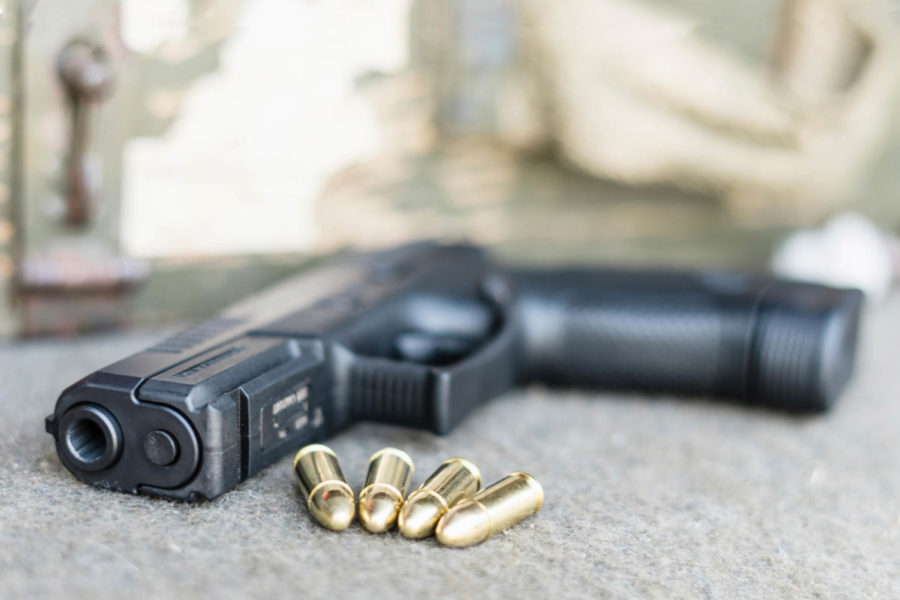Suza: Bullet through the heart
July 6, 2020
Editor’s Note: This is the tenth of a collective series conducted by Walter Suza.
Outdoor activities involving use of firearms are a family tradition across the United States — viewed with pride by some and feared by others.
Highlighting the concern in the Black community, Brian Williams writes, “Black people are 10 times more likely than white people to die from firearm violence. … 50 percent of gun violence victims will be Black men … and the majority of gun homicides occur in racially segregated neighborhoods.”
In spite of this grim reality for Black people, many in our nation take great pride in owning firearms, making it essential to acknowledge the pride and concerns and to find a common middleground that embraces family tradition and maximizes firearm safety.
I listened to a mom express her pride when her 16-year-old white son had shot his first deer with a brand new rifle he received for his birthday.
Her son had been out with his dad for several days without success, so getting his first deer was a victory. It sounded like the killing was a rite of passage for the boy.
I felt some connection with the story. My grandfather owned guns and used them for hunting. Even though I never hunted with guns, I processed animals for food during my childhood in Tanzania.
I think my face must have revealed my emotions because the proud mom went on to say, “I know you have reservations about shooting animals; however, my son said that the bullet went right through its heart and the deer did not feel any pain.”
I felt uncomfortable with the words, “the bullet went through the heart” and the “animal did not feel any pain.”
I realized my discomfort was from my ingrained concern for human deaths through firearms. I had seen the ravages of war during my work with the United Nations World Food Programme in Angola in the late 1990s.
The Angolan Civil War spanned 1975 to 2002, resulting in close to half a million deaths. Overall, arms conflict has led to millions of deaths across Africa.
My role with the World Food Programme was to assess food needs of rural communities affected by the war. I recall traveling to the interior of Angola and finding it difficult to sleep at night because of the loud bursts of gunfire.
Since arriving in the United States 20 years ago, I have witnessed contentious debates around the issue of firearm violence.
The polarized viewpoints generate strong passion and political impasse to find common sense solutions to prevent mass shootings and firearm-related homicides.
I reviewed information from the Center for American Progress on gun violence in the United States and I learned that from 2008 to 2017, the U.S. lost more than 342,000 people from firearms — translating to about 38,000 deaths per year!
According to a report in Annals of Internal Medicine, more than 80 percent of homicides and 60 percent of suicides in the United States involve firearms. And since 1968, more people have died by guns in the United States than have died in wars.
After the 2012 massacre at Sandy Hook Elementary in Newtown, Connecticut, I found myself agonizing with fear at my lack of control over the safety of my children when they were in school. I am sure many parents can relate.
I spent time pondering the ramifications of the Second Amendment — the immense power and responsibility it bestows on individuals who own and operate firearms.
After the 2018 shooting at Marjory Stoneman Douglas High School in Parkland, Florida, I became more frustrated that it’s taking our country so long to prevent school shootings.
Isn’t it ironic that motor vehicles are now equipped with the technology that indicates to the operator whether they have been paying attention to the road or are in need of a rest? Yet we still struggle to provide safety measures for gun use.
What if, in the future, America manufactured “smart firearms” for civilian use?
Such civilian firearms would only discharge when not near “gun-safe zones” such as schools, places of worship or public events such as concerts or parades.
Can we engineer guns to sense emotional states and possibly prompt the user, “You are approaching a gun-safe zone. It seems like you are enraged. Would you take a moment to evaluate your thoughts?”
Could there be a way to develop smart bullets that would “sense” signals emanating from “gun-safe” zones and “refuse” to be discharged?
Of course, such ideas would face significant challenges to align with our individual rights.
However, we live in one of the most technologically advanced nations. We were first to walk on the moon and are charting a path to Mars. Surely, we can find solutions to prevent mass shootings and gun violence.
In his op-ed entitled “The five extra words that can fix the Second Amendment,” Supreme Court Justice John Paul Stevens reminds us “The law should encourage intelligent discussion of possible remedies for what every American can recognize as an ongoing national tragedy.”
It is heartbreaking that the same object protected with pride would be the messenger of death for the beloved: “At least 24 heavy-gauge shotgun pellets, each as large and as deadly as a single bullet from a rifle or a handgun, were fired into Ahmaud Arbery,” according to his autopsy report.
What must it take for our nation to ensure bullets will not tear through human hearts?







